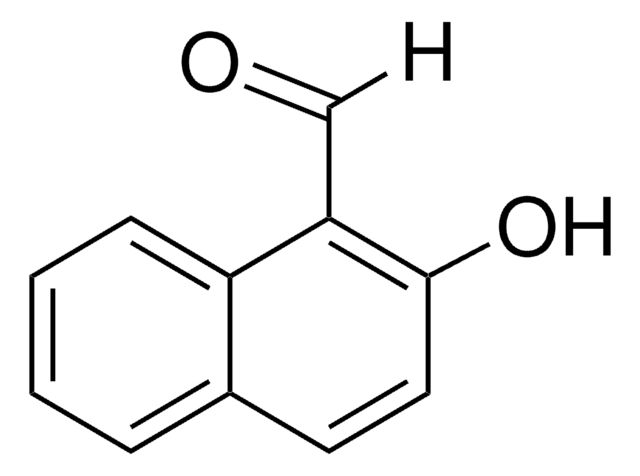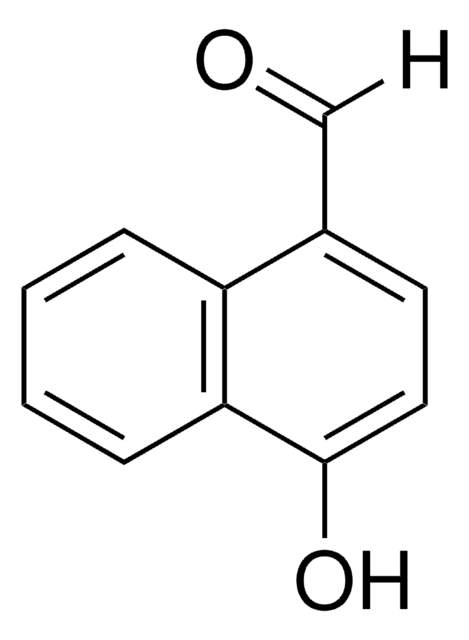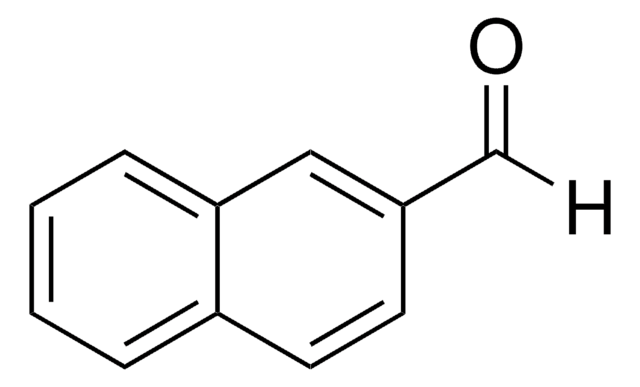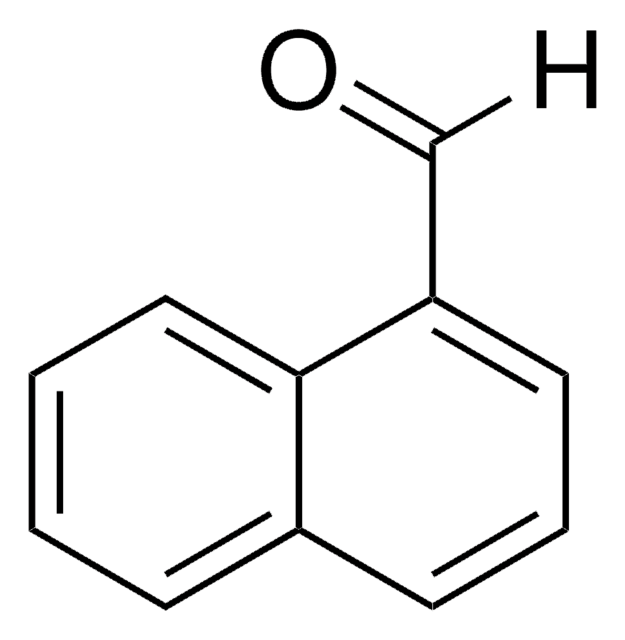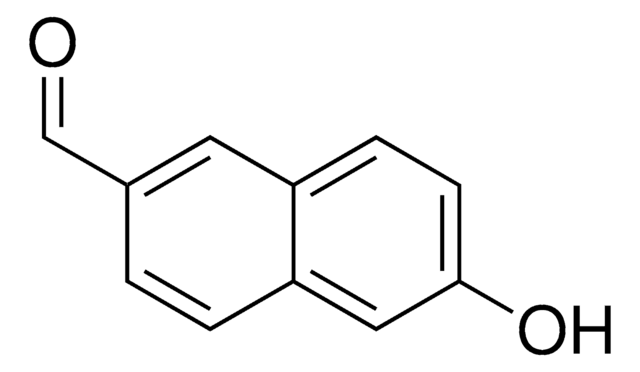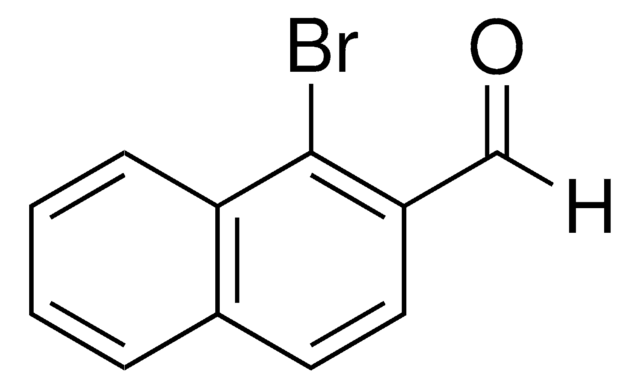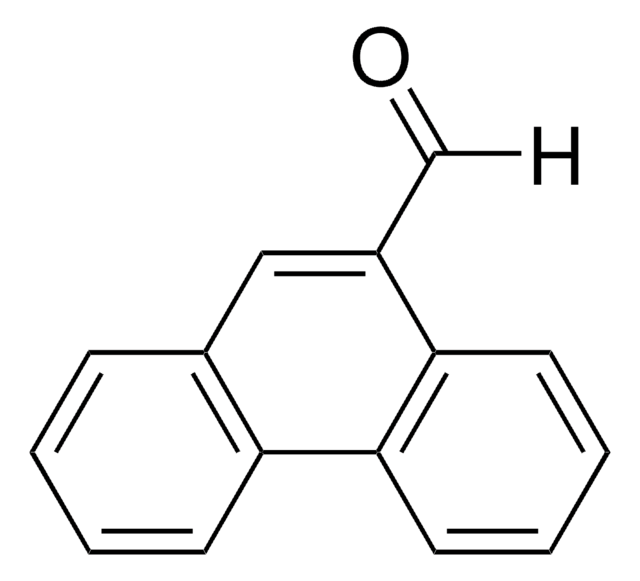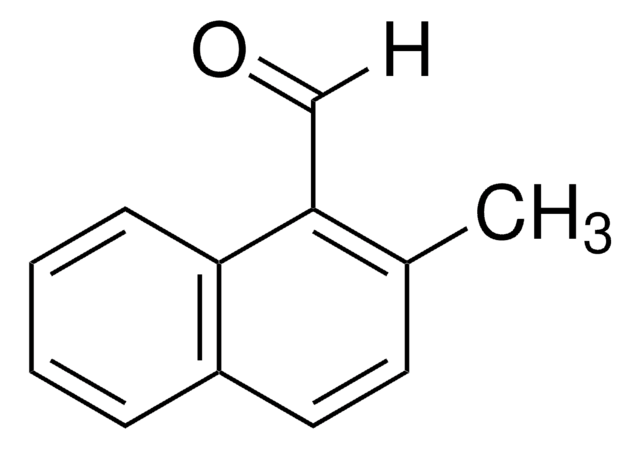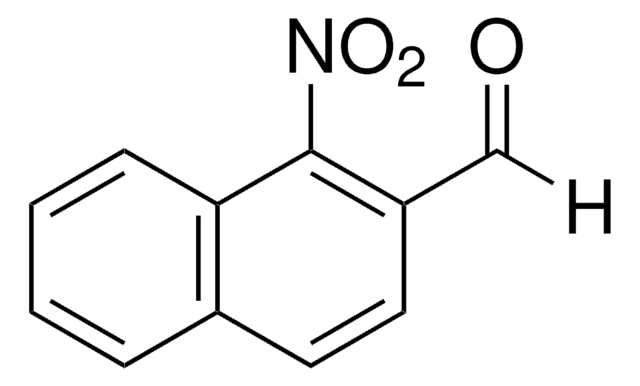103241
4-Methoxy-1-naphthaldehyde
99%
Se connecterpour consulter vos tarifs contractuels et ceux de votre entreprise/organisme
About This Item
Formule linéaire :
CH3OC10H6CHO
Numéro CAS:
Poids moléculaire :
186.21
Numéro CE :
Numéro MDL:
Code UNSPSC :
12352100
ID de substance PubChem :
Nomenclature NACRES :
NA.22
Produits recommandés
Essai
99%
Forme
solid
pb
212 °C/40 mmHg (lit.)
Pf
35-36 °C (lit.)
Chaîne SMILES
COc1ccc(C=O)c2ccccc12
InChI
1S/C12H10O2/c1-14-12-7-6-9(8-13)10-4-2-3-5-11(10)12/h2-8H,1H3
Clé InChI
MVXMNHYVCLMLDD-UHFFFAOYSA-N
Application
4-Methoxy-1-naphthaldehyde was used in fluorometric enzymatic assay for determination of activity of class I and II alcohol dehydrogenase isoenzymes in human pancreas and in human liver homogenates.
Actions biochimiques/physiologiques
4-Methoxy-1-naphthaldehyde is fluorogenic substrate for human alcohol dehydrogenase (ADH).
Code de la classe de stockage
11 - Combustible Solids
Classe de danger pour l'eau (WGK)
WGK 3
Point d'éclair (°F)
Not applicable
Point d'éclair (°C)
Not applicable
Équipement de protection individuelle
Eyeshields, Gloves, type N95 (US)
Faites votre choix parmi les versions les plus récentes :
Déjà en possession de ce produit ?
Retrouvez la documentation relative aux produits que vous avez récemment achetés dans la Bibliothèque de documents.
Lech Chrostek et al.
Digestive diseases and sciences, 48(7), 1230-1233 (2003-07-23)
Ethanol metabolism in the pancreas occurs predominantly by way of an nonoxidative pathway to fatty acid ethyl esters but oxidative routes to acetaldehyde also may contribute to injury of pancreatic cells. Three metabolic systems are responsible for the oxidative metabolism
L Chrostek et al.
Clinical chemistry and laboratory medicine, 38(5), 409-412 (2000-08-22)
We have measured the activity of class I and II alcohol dehydrogenase isoenzymes in the sera of patients with liver tumours, using class-specific fluorogenic naphthaldehydes as substrates. The activity of the tested isoenzymes was unchanged in primary tumours and significantly
Lech Chrostek et al.
Journal of clinical laboratory analysis, 17(3), 93-96 (2003-04-16)
Alcohol dehydrogenase (ADH) and aldehyde dehydrogenase (ALDH), which are most abundant in the liver, are the main enzymes involved in ethanol metabolism in humans. Gender-related differences in total liver ADH and ALDH activity among different animal species have been observed
J Wierzchowski et al.
Analytical biochemistry, 178(1), 57-62 (1989-04-01)
Two new fluorogenic substrates for human alcohol dehydrogenase (ADH), 4-methoxy-1-naphthaldehyde (IA) and 6-methoxy-2-napthaldehyde (IIA), are described. The 2-naphthaldehyde derivative fluoresces in aqueous media with a quantum yield of 0.22 with an emission maximum at 450 nm, but the 1-naphthaldehyde shows
L Chrostek et al.
Experimental and toxicologic pathology : official journal of the Gesellschaft fur Toxikologische Pathologie, 53(1), 77-80 (2001-05-24)
The effect of methanol poisoning of rats on the hepatic activities of enzymes metabolizing alcohols was evaluated. The activities of alcohol (ADH) and aldehyde dehydrogenase (ALDH) in the liver of rats dosed with 1.5 and 3 g of methanol/kg b.w.
Notre équipe de scientifiques dispose d'une expérience dans tous les secteurs de la recherche, notamment en sciences de la vie, science des matériaux, synthèse chimique, chromatographie, analyse et dans de nombreux autres domaines..
Contacter notre Service technique
